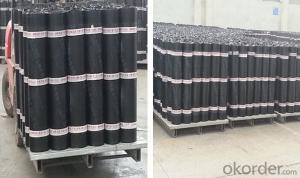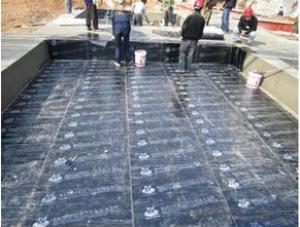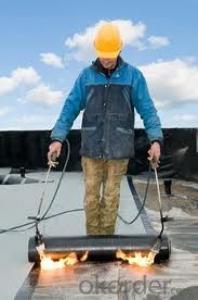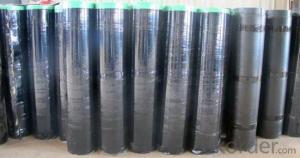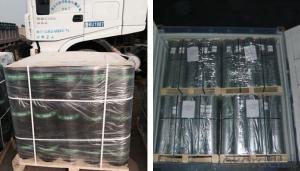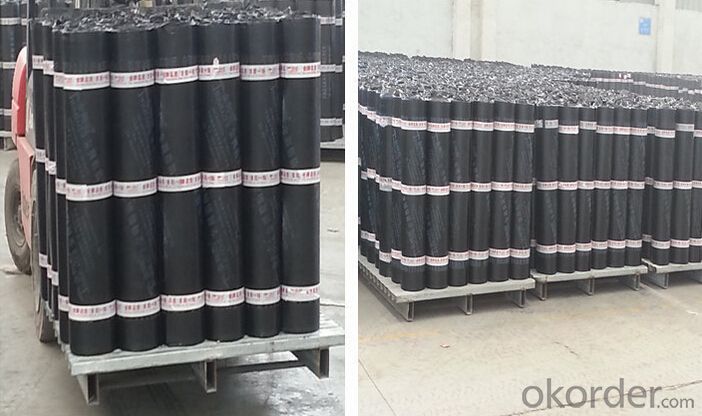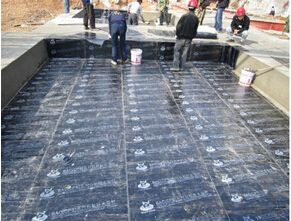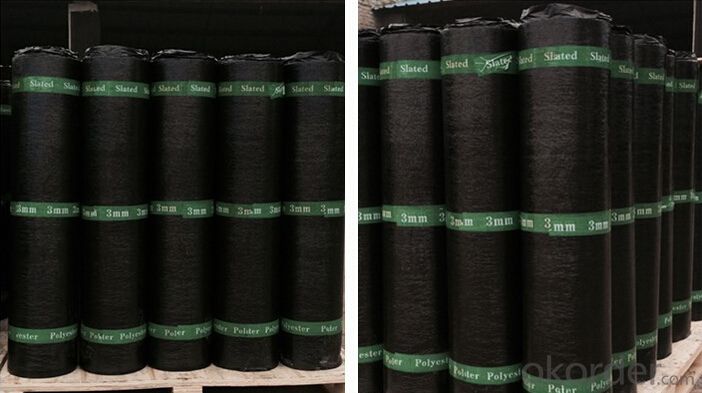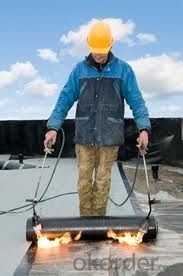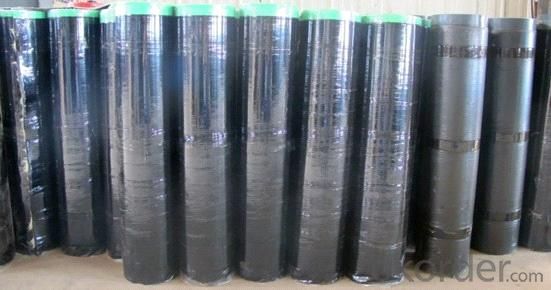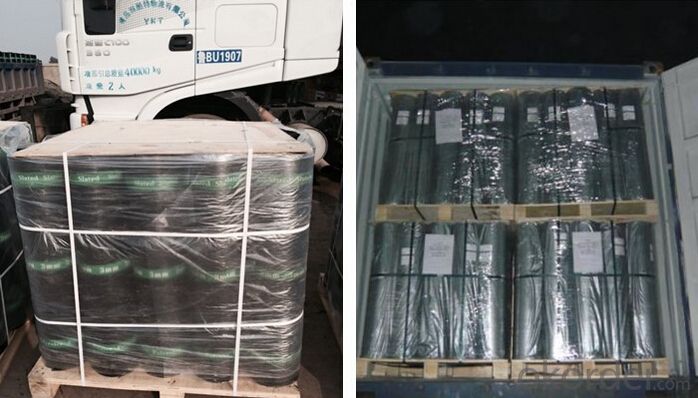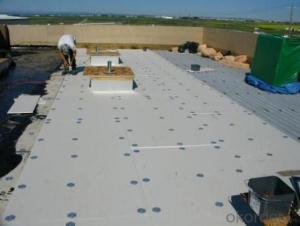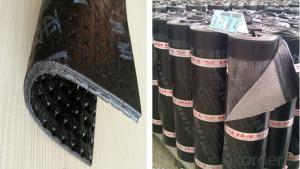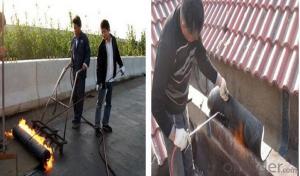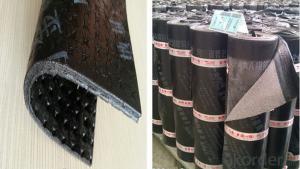SBS Modified Bitumen China rubber Waterproofing Roofing Rolling Membrane For Bridge
- Loading Port:
- Shanghai
- Payment Terms:
- TT OR LC
- Min Order Qty:
- 2000 m²
- Supply Capability:
- 200000 m²/month
OKorder Service Pledge
OKorder Financial Service
You Might Also Like
product description:
sbs waterproof membrane take the “Skin” type waterproof thought, according to the features of construction site, on the basis of width elastomeric modified bitumen waterproofing membrane, combining with features of wet-application self-adhesive membrane, use advanced equipment to produce 2 meters width that WP-SBS wet-application width elastomeric modified bitumen waterproofing membrane (Hereinafter referred to: WP-SBS membrane).WP-SBS is made of bitumen modified with Styrene-Butadiene- Styrene (SBS)as dipping and painting. Its upper surface covers PE membrane and color sand or schist, and lower surface is made of isolation material. Products correspond to the national standards GB18242-2008(elastomeric modified bitumen waterproofing membrane), paste by cement or cement mortar, and construct on the wet base, achieving tight and full adhesion with substrates, eliminating fluid-channeling layer, all above contribute to making a reliable “Skin” type waterproof system, which is a breakthrough innovation in ordinary modified bitumen membrane.
Characteristic
1.Good impermeability
2.Possess good tensile strength, elongation and size stability which could be well suited the substrate distortion and crack.
3.Good performance in anti-strength, anti-resistance , anti-erosion, anti-mildew, anti-weathering
4.SBS modified bitumen membrane is specially being applied in the cold area with low temperature, while APP modified bitumen membrane is applied in the area with high temperature.
5.Convenient installation
Applicable scope:
It is widely used for civil building roofing, underground, bridge, parking, pool, tunnel in the line of waterproofing and dampproofing, especially for the building under high temperature.
Application
The needle-punched polyester is widely used as the carrier for waterproofing membrane production. The membrane made withneedle-punched polyester matis widely used for: Construction waterproofing; Moisture-proof in roof engineering, underground engineering, indoor ground, etc;Corrosion resistance for water pool or building bases.
Our Services
1.If you need some advises for the waterproof construction, we have the best engineer to serve you.
2.We send the free samples to you by freight collect.
3.We will guarantee the quality and the competitive price.
4.We will give you the best packaging and safe shipping.
5.If any problem, we will always be right here waiting for you.
Packaging & Shipping
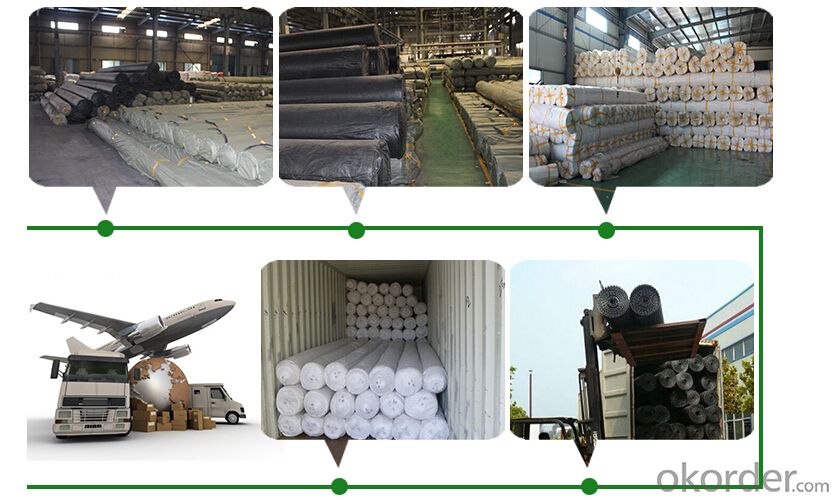
| Packing | Woven bag/PE bag packing or as customer request |
| Shipping | FOB Changsha,customized shipping terms and oppointed port accepted |
Technical parameter
| Item | Specifications | ||||||||
| Geotextile Unit Weight (g/m²) | 300 | 500 | 600 | 700 | 800 | 900 | 1000 | 1100 | |
| Geomembrane Thickness (mm) | 0.25-0.35 | 0.30-0.50 | |||||||
| Nominal Fracture Strength (KN/m) | 2.50 | 7.50 | 10 | 12 | 14 | 16 | 18 | 20 | |
| Breaking Strength (KN/m,≥,LD/TD) | 2.50 | 7.50 | 10 | 12 | 14 | 16 | 18 | 20 | |
| Standard Intensity Corresponding Elongation Rate (%) | 30~100 | ||||||||
| CBR Burst Strength (KN,≥) | 0.70 | 1.50 | 1.90 | 2.20 | 2.50 | 2.80 | 3.00 | 3.20 | |
| Longitudinal Tear Strength (KN,≥) | 0.05 | 0.25 | 0.32 | 0.40 | 0.48 | 0.56 | 0.62 | 0.70 | |
| Hydrostatic Pressve (Mpa) | See List Below | ||||||||
| Peel Strength (N/cm,≥) | 6 | ||||||||
| Vertical Permeability Coefficient (cm/s) | According to design or contract mentioned. | ||||||||
| Width Variation (%) | -1.00 | ||||||||
| Item | Geomembrane Thickness (mm) | ||||||||
| 0.20 | 0.30 | 0.40 | 0.50 | 0.60 | 0.70 | 0.80 | 1.00 | ||
| Hydrostatic Pressve (Mpa) | One geotextiles with one geomembrane | 0.40 | 0.50 | 0.60 | 0.80 | 1.00 | 1.20 | 1.40 | 1.60 |
| Two geotextiles with one geomembrane | 0.50 | 0.60 | 0.80 | 1.00 | 1.20 | 1.40 | 1.60 | 1.80 | |
Professional test machines ensure the products qualified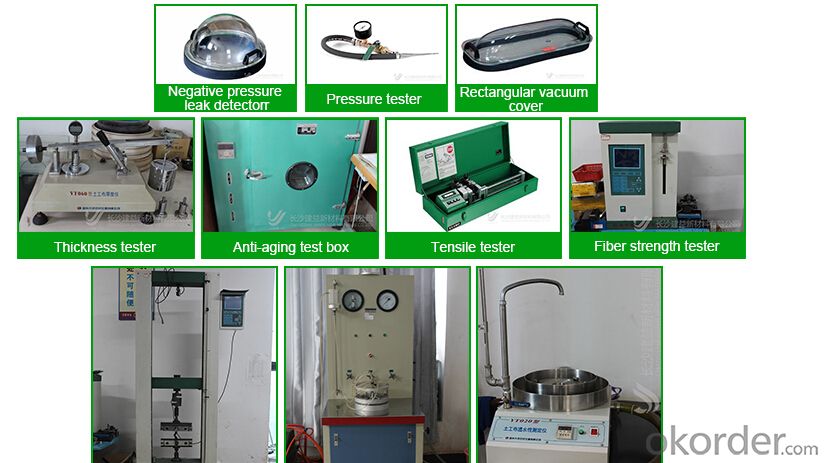 roduct certifications
roduct certifications
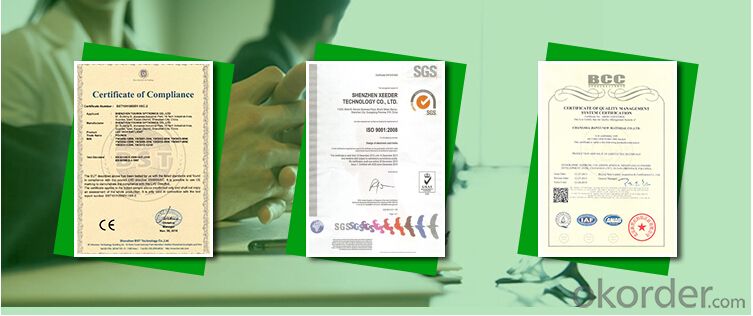
Inquiry Note
How to send an effective inquiry for saving your time?
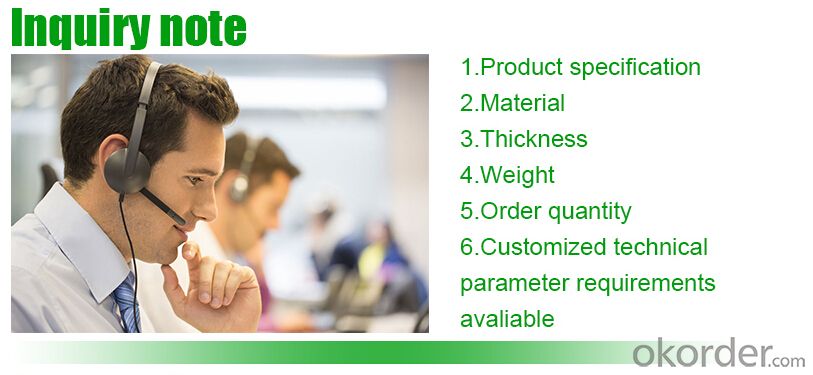
product show
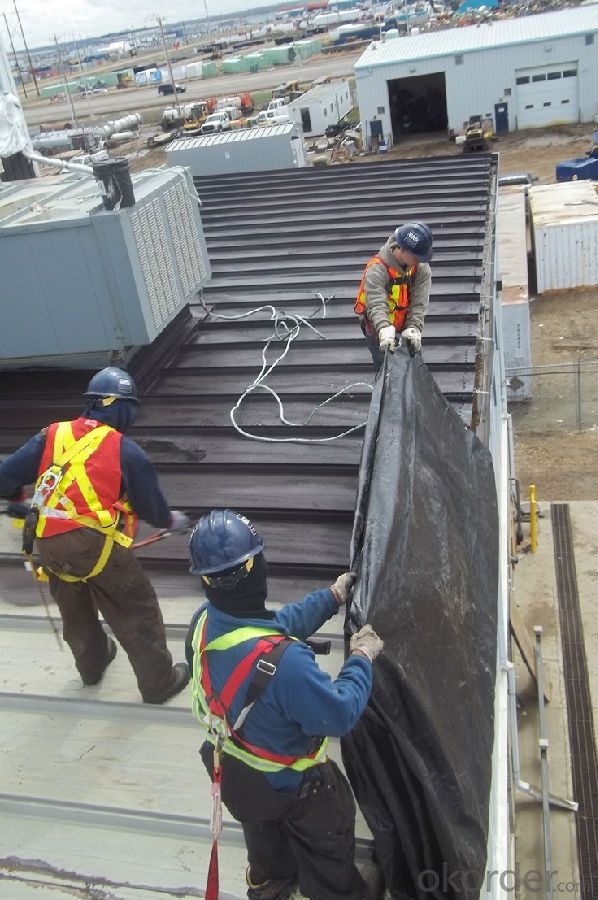
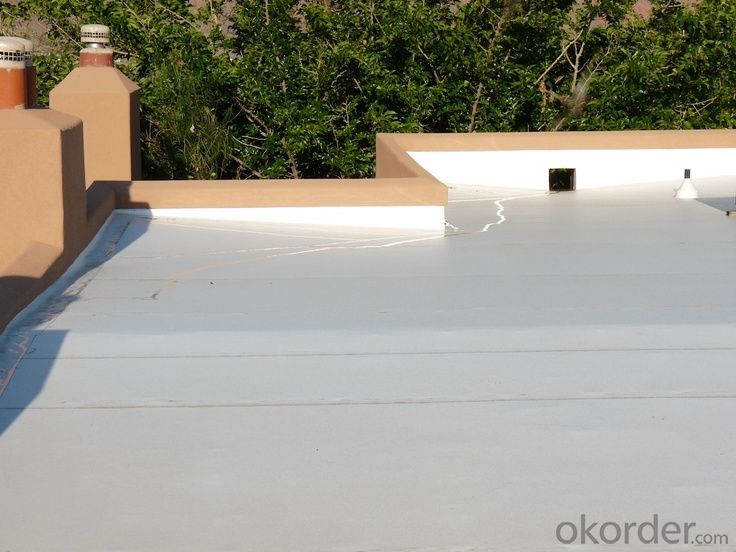

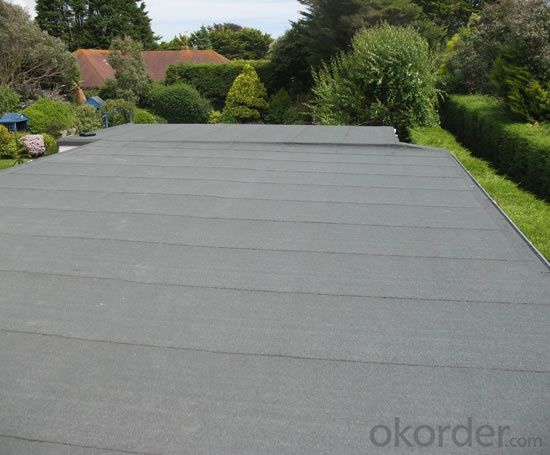
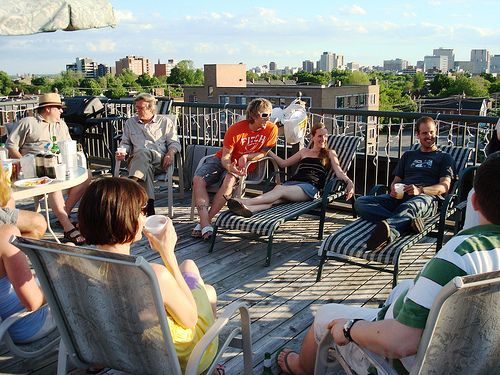
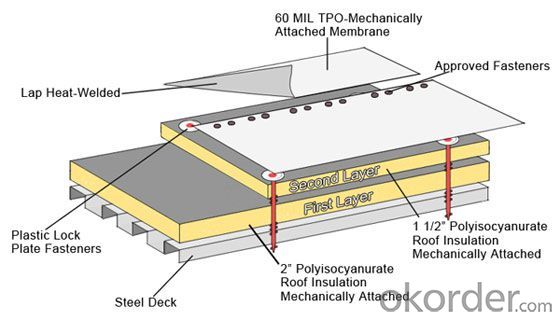
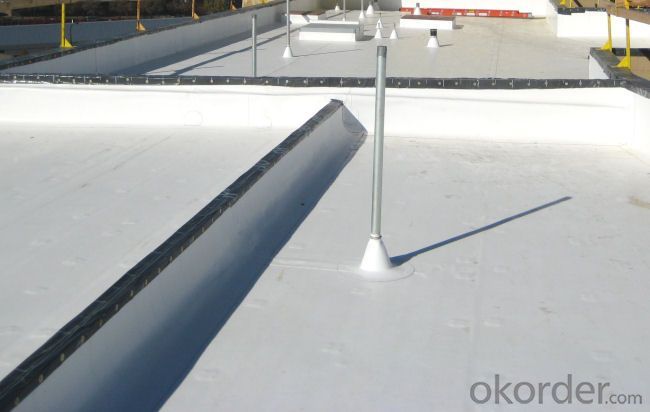
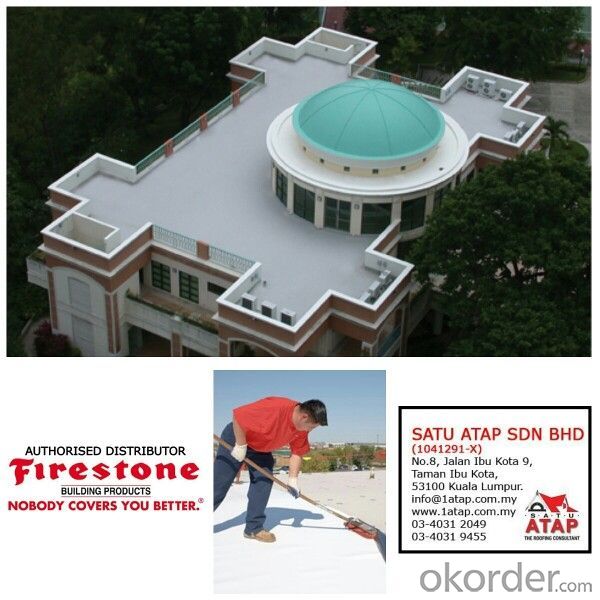
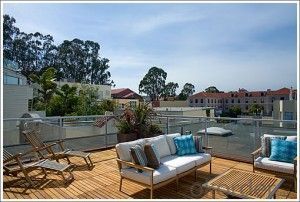
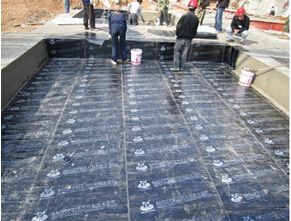
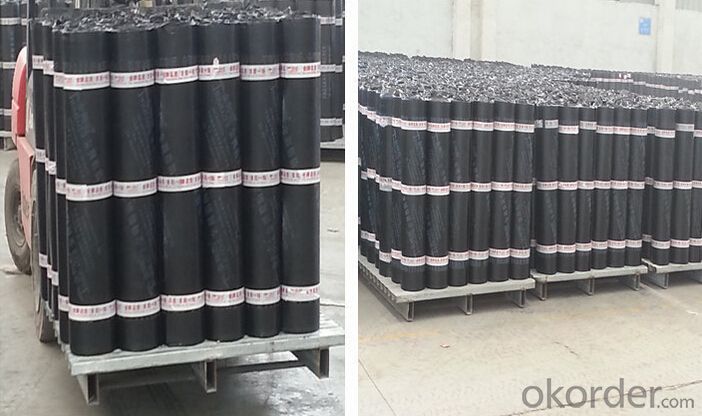
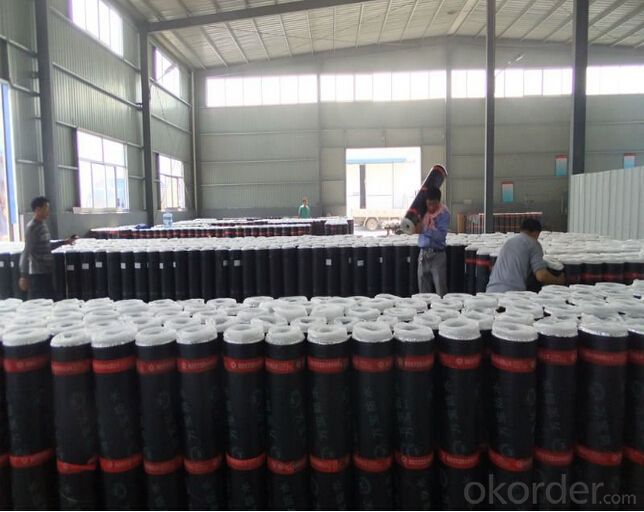
FAQ

- Q: Can a waterproofing membrane be used on tunnels with soundproofing systems?
- Yes, a waterproofing membrane can be used on tunnels with soundproofing systems. In fact, it is common practice to use waterproofing membranes in conjunction with soundproofing systems in tunnels. This is because tunnels are susceptible to water infiltration, which can cause damage to the structure, as well as compromise the performance of the soundproofing system. By applying a waterproofing membrane, the tunnel can be protected from water intrusion, ensuring the longevity and effectiveness of the soundproofing system. Additionally, the waterproofing membrane can help to maintain a dry and comfortable environment within the tunnel, which is crucial for the efficient functioning of the soundproofing system. Therefore, the combination of a waterproofing membrane and soundproofing system is highly recommended for tunnels to provide both water protection and sound insulation.
- Q: Can a waterproofing membrane be used on precast nickel surfaces?
- Yes, a waterproofing membrane can be used on precast nickel surfaces. The membrane will provide a protective barrier against water penetration, helping to prevent moisture damage and corrosion on the nickel surface.
- Q: Can waterproofing membranes be used on mechanical rooms?
- Yes, waterproofing membranes can be used on mechanical rooms. Mechanical rooms often house equipment such as boilers, pumps, and ventilation systems, which can be sensitive to water damage. Waterproofing membranes provide a protective barrier against water infiltration and can help prevent leaks, moisture buildup, and potential damage to the equipment. Additionally, these membranes can also provide thermal insulation, noise reduction, and fire resistance properties. It is important to choose the appropriate type of waterproofing membrane based on the specific needs and requirements of the mechanical room.
- Q: Are waterproofing membranes resistant to chemical spills?
- Yes, waterproofing membranes are typically resistant to chemical spills. These membranes are designed to create a barrier that prevents water and other liquids from penetrating into the underlying structure or substrate. In order to provide this protection, waterproofing membranes are often made from chemically resistant materials, such as synthetic rubber, thermoplastic, or modified bitumen. These materials are chosen for their ability to withstand exposure to a wide range of chemicals, including oils, solvents, acids, and alkalis. However, it is important to note that the specific chemical resistance of a waterproofing membrane may vary depending on the materials used and the manufacturing process. Therefore, it is necessary to consult the manufacturer's guidelines or specifications to ensure that the chosen waterproofing membrane is suitable for the intended chemical environment.
- Q: Can waterproofing membranes be used on mechanical rooms?
- Yes, waterproofing membranes can be used on mechanical rooms. Mechanical rooms often house equipment such as boilers, pumps, and ventilation systems, which can be sensitive to water damage. Waterproofing membranes provide a protective barrier against water infiltration and can help prevent leaks, moisture buildup, and potential damage to the equipment. Additionally, these membranes can also provide thermal insulation, noise reduction, and fire resistance properties. It is important to choose the appropriate type of waterproofing membrane based on the specific needs and requirements of the mechanical room.
- Q: Does a waterproofing membrane require any specific surface preparation for tile installations?
- Yes, a waterproofing membrane typically requires specific surface preparation for tile installations. The surface needs to be clean, dry, and free of any dirt, dust, or debris. It is important to remove any loose or damaged tiles, repair any cracks or imperfections, and ensure the surface is smooth and level before applying the waterproofing membrane. This preparation ensures proper adhesion and a successful tile installation.
- Q: Can a waterproofing membrane be used on precast metal surfaces?
- Precast metal surfaces can benefit from the application of a waterproofing membrane. These membranes are specifically designed to create a protective layer that stops water from penetrating the surface. They can be used on various types of surfaces, including precast metal. Waterproofing membranes are typically made from materials like bitumen, liquid coatings, or synthetic rubber. These materials form a barrier that prevents water and moisture from causing damage. When a waterproofing membrane is applied to precast metal surfaces, it helps to prevent corrosion, protects against water damage, and improves the overall durability and lifespan of the metal structure. However, it is crucial to select a waterproofing membrane that is compatible with the specific type of precast metal surface. Additionally, proper surface preparation and application techniques must be followed to ensure optimal performance.
- Q: Can a waterproofing membrane be used on both interior and exterior walls?
- Yes, a waterproofing membrane can be used on both interior and exterior walls. The membrane helps prevent water penetration, providing protection against moisture for both sides of the wall.
- Q: Are waterproofing membranes resistant to chemicals?
- Waterproofing membranes are generally resistant to chemicals, providing a protective barrier against water infiltration. These membranes are typically made from materials like PVC, TPO, or EPDM, which possess excellent chemical resistance properties. Their engineering ensures they can endure exposure to various chemicals like acids, alkalis, solvents, and oils without deteriorating. This chemical resistance guarantees that waterproofing membranes can maintain their integrity and effectiveness even in environments with common chemical exposure, such as industrial settings, laboratories, or chemical storage areas. However, it is important to consider that the specific chemical resistance capabilities may differ based on the type and quality of the chosen waterproofing membrane. Therefore, it is crucial to select the appropriate membrane that matches the project's specific chemical exposure requirements.
- Q: How does a waterproofing membrane handle water vapor transmission?
- A waterproofing membrane handles water vapor transmission by preventing the passage of water vapor through its surface. It acts as a barrier to prevent moisture from penetrating the membrane, thus protecting the underlying structure from potential damage caused by moisture.
Send your message to us
SBS Modified Bitumen China rubber Waterproofing Roofing Rolling Membrane For Bridge
- Loading Port:
- Shanghai
- Payment Terms:
- TT OR LC
- Min Order Qty:
- 2000 m²
- Supply Capability:
- 200000 m²/month
OKorder Service Pledge
OKorder Financial Service
Similar products
Hot products
Hot Searches
Related keywords
